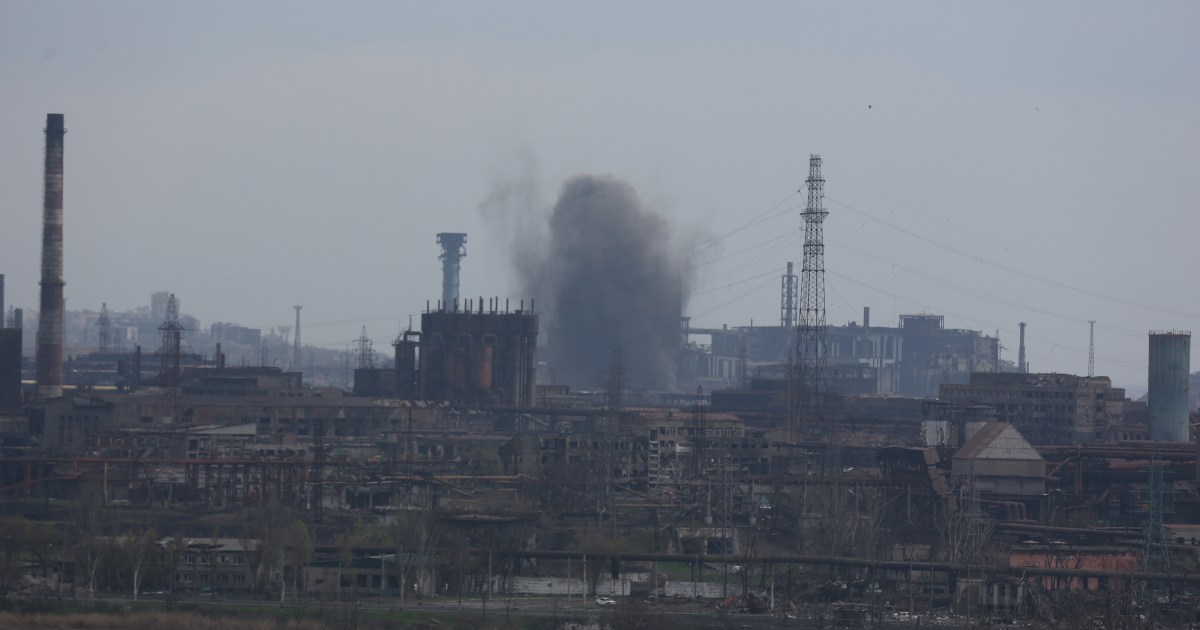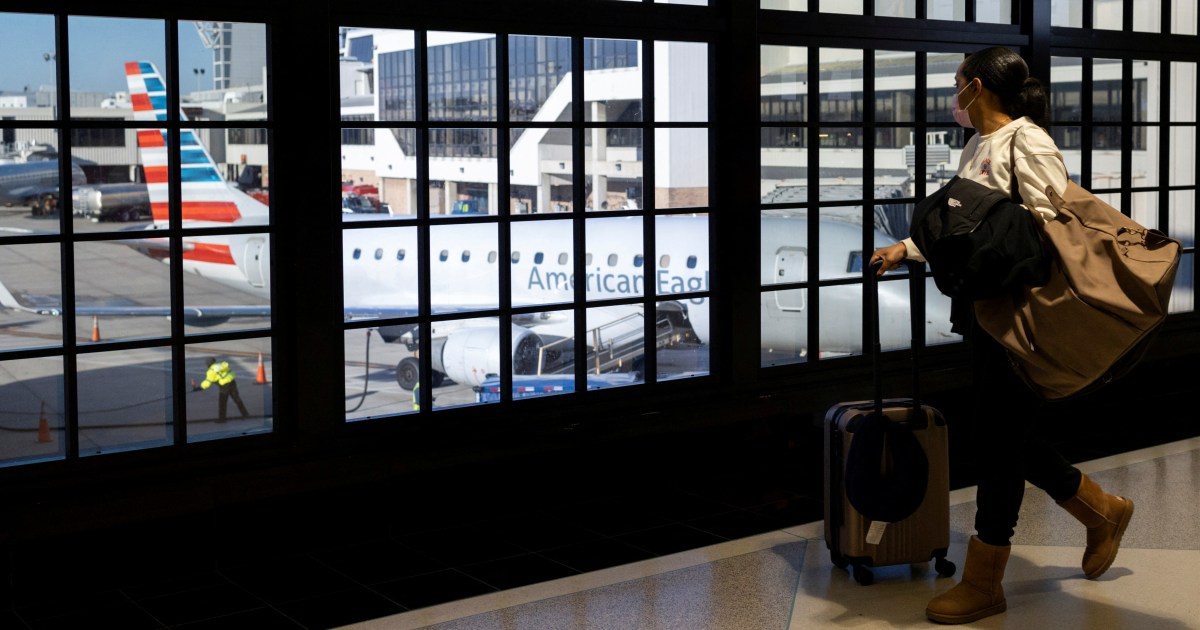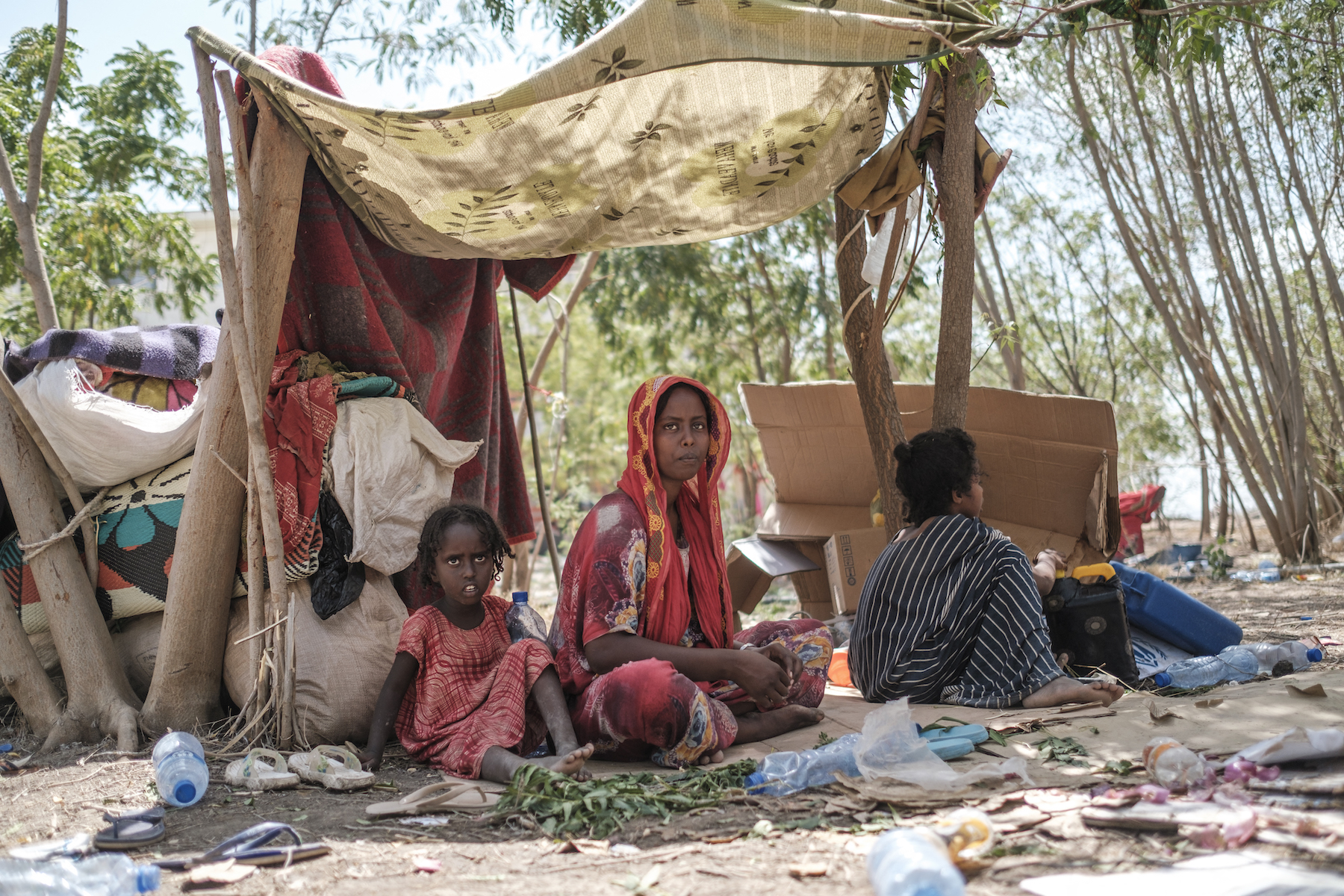Evacuation of civilians from Ukraine’s besieged Mariupol delayed | Russia-Ukraine war News
Efforts to evacuate more civilians from the devastated Ukrainian port city of Mariupol ran into delays on Monday and hundreds of people remained trapped in the Azovstal steelworks, the last stronghold of resistance to the Russian siege.
It was not immediately clear what was causing the hold-up. A city official said earlier that Russian forces had on Sunday resumed shelling the plant after a convoy of buses had left.
The plight of civilians trapped in Mariupol, which endured weeks of bombardment before Russian forces captured most of it, has been a focus of humanitarian concern as the war has ground on into a third month.
A siege of the city since the early days of the war has trapped civilians with scarce access to food, water, medicine and electricity.
As many as 100,000 people may still be in Mariupol, including an estimated 2,000 Ukrainian fighters beneath the Soviet-era steel plant — the only part of the city not occupied by the Russians.
Delays
A first group of evacuees from Mariupol had been due to arrive in the Ukrainian-held city of Zaporizhzhia, 230km northwest of Mariupol, on Monday.
But the city council said the buses had not yet reached the agreed pickup point, contradicting an earlier report that they had already left. The council urged the evacuees to remain in place.
The civilians in question are from the city itself, not from the Azovstal steelworks.
Footage from inside the steelworks showed members of the Azov regiment helping civilians through rubble and on to a bus. But hundreds remain trapped inside.
One older evacuee accompanied by young children said survivors were running out of food. “Children always wanted to eat. You know, adults can wait,” she said.
The evacuation, if successful, would represent rare progress in easing the human cost of the almost 10-week war, which has caused particular suffering in Mariupol.
Russian President Vladimir Putin’s forces are now in control of nearly all of the Sea of Azov city, linking up Russian-held territory to the west and east.
Moscow said last week that it had decided against storming the steelworks and would instead blockade it. But bombardments have continued.
“Yesterday, as soon as the buses left Azovstal with the evacuees, new shelling began immediately,” Petro Andryushchenko, an aide to the Mariupol mayor, told Ukrainian television.
The United Nations and International Committee of the Red Cross began an operation coordinated with Ukraine and Russia on Saturday to bring out women, children and the elderly from the steelworks.
The Russian army said 126 people had left Mariupol in safe convoys over Saturday and Sunday from the steelworks and other districts for separatist-controlled Donetsk. Of these, 57 opted to stay in that area, while the others had decided to leave for Ukrainian-held parts, it said.
In the past, Ukrainian officials have accused Moscow’s troops of forcibly relocating civilians from areas they have captured to Russia; Moscow has said the people wanted to go to Russia.
Previous attempts to open safe corridors out of Mariupol and other places have broken down.
People fleeing Russian-occupied areas in the past have said their vehicles were fired on, and Ukrainian officials have repeatedly accused Russian forces of shelling agreed-upon evacuation routes – claims denied by Moscow.
‘We could see rockets flying’
An Azovstal steel plant employee who spent weeks in the plant’s bomb shelter before she arrived in Donetsk, told the Reuters news agency about the fear she went through at the plant.
“When the shells started landing at Azovstal, I thought my heart would stop and I would not survive it,” Natalia Usmanova said.
Anastasiia Dembytska took advantage of the brief ceasefire to leave Mariupol with her daughter, nephew and dog.
She told The Associated Press news agency she could see the steel plant from her window, when she dared to look out.
“We could see the rockets flying” and clouds of smoke over the plant, she said.
She said she had to navigate many checkpoints on the journey to Zaporizhzhia and waited 18 hours near the city before being allowed to pass.
Like many Mariupol residents, Dembytska and her family survived by cooking on a makeshift stove and drinking well water under near-constant bombardment.
“I was scared, then I got used to it,” her 14-year-old daughter Vladyslava said.





Pingback: สล็อตเว็บนอก